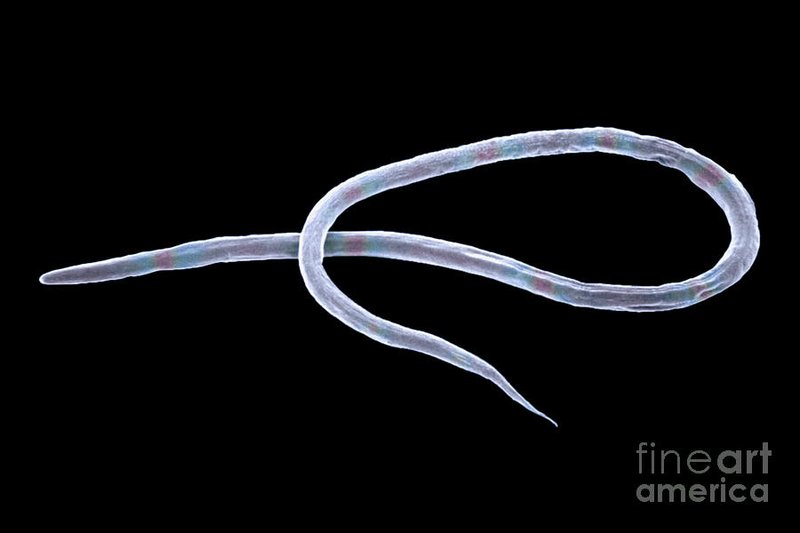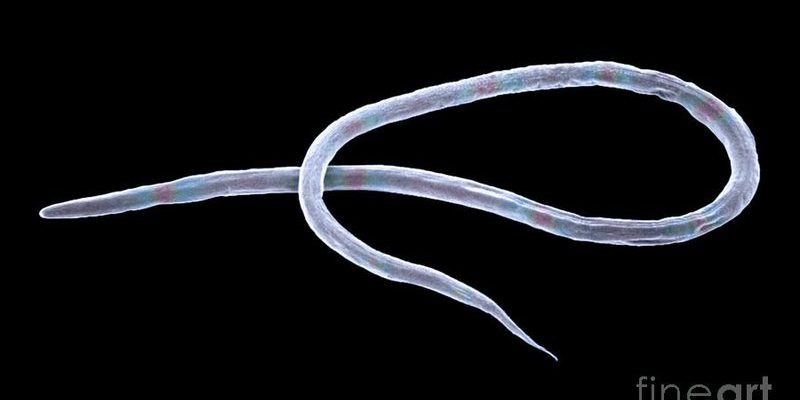
Imagine you’re a scientist on a quest to understand the daily lives of these tiny creatures. You set up a field camera—like those from brands such as GoPro or Canon—which can record high-definition videos and take snapshots. This way, you can observe their interactions, feeding habits, and even their responses to various stimuli. In this article, I’ll walk you through the process of documenting vinegar eel behavior with field cameras, covering everything from choosing the right setup to analyzing the footage.
What Are Vinegar Eels?
To fully appreciate why we’d want to document vinegar eels, let’s dig into what they are and why they’re interesting. Vinegar eels, scientifically known as *Turbatrix aceti*, are slender, transparent worms that live in vinegar and other fermented foods. They’re actually quite harmless to humans and play a role in breaking down organic materials in their environment.
These eels thrive in environments rich in acetic acid, which is the main component in vinegar. Given their environment, they have adapted to swim in these acidic waters. Here’s the thing: watching them in their natural setting opens up a whole new world of understanding about ecological interactions and the role these organisms play in their ecosystems.
Their behavior is intriguing—how they move, feed, and interact with one another can tell us a lot about their biology. Observing vinegar eels helps not only researchers but also hobbyists who enjoy learning about microscopic life.
Choosing the Right Field Camera
When it comes to documenting vinegar eel behavior, selecting the right field camera is crucial. You want something that can capture high-quality images in various lighting conditions. Brands like GoPro and Canon offer options that are compact yet powerful. Here are a few features you should look for:
- Video Quality: Choose a camera that can record in at least 1080p. This ensures you capture clear, detailed footage that allows you to observe the eels’ movements closely.
- Battery Life: Since vinegar eels can be unpredictable, a long-lasting battery will help you keep the camera rolling throughout your observation period.
- Water Resistance: If you’re documenting them in their natural vinegar habitat, a water-resistant camera will be beneficial to protect it from accidental spills.
Honestly, if you plan to monitor them over several days, features like Wi-Fi pairing or remote control can help you adjust settings without having to touch the device repeatedly—keeping disturbances to a minimum.
Setting Up Your Field Camera
Now that you’ve chosen your field camera, it’s time to set it up. First, find a good location where vinegar eels are abundant. A sample from a bottle of vinegar left out for fermentation is ideal. Here’s how to get started:
1. Prepare Your Sample: Pour a small amount of vinegar into a clear container, ensuring it’s large enough for the eels to swim around.
2. Position Your Camera: Set up the camera at an angle that captures the area where the eels are most active. You might want to use a tripod to stabilize it.
3. Lighting Matters: Good lighting is key. If possible, place the container in a well-lit area, or use a lamp to illuminate it without creating glare.
Make sure to test the camera before leaving it unattended. It’s crucial that it’s properly focused and that the settings are right. You don’t want to miss important behaviors because of a blurry lens!
What to Look For in Vinegar Eel Behavior
As you start documenting, keep an eye out for interesting activities. Vinegar eels exhibit a variety of behaviors that can be quite captivating. Here are a few things to observe:
– Feeding Patterns: Watch how they feed on microscopic particles in the vinegar. Their methodical movements while searching for food can give insights into their feeding habits.
– Social Interactions: Sometimes, vinegar eels bump into each other. Observing these interactions can reveal whether they’re territorial or if they exhibit social behaviors.
– Swimming Techniques: Notice how they maneuver through the liquid. Do they dart quickly, or do they glide slowly? This can help you understand their swimming mechanics and adaptations to living in vinegar.
Keeping a journal of these observations can help you identify patterns over time. You might even notice changes based on the time of day or different environmental factors.
Analyzing Your Footage
Once you’ve captured some footage, it’s time for the fun part: analysis! Watching the videos closely can reveal much more than you first noticed. Here’s how to break it down:
1. Review the Footage: Go through your recordings and take notes on specific behaviors you see. Pay attention to feeding times, movement, and any interactions between eels.
2. Look for Patterns: After reviewing, look for recurring behaviors. Do they cluster in certain areas? Do they feed more actively at specific times? Identifying patterns can help you understand their habits better.
3. Compare Data: If you’ve recorded multiple sessions, compare your notes. This can help you see changes based on the environment or time period, which is fascinating for understanding their adaptability.
Analyzing footage can be time-consuming, but it can also be extremely rewarding. You may uncover new insights about these tiny creatures.
Challenges and Troubleshooting
Like any nature project, documenting vinegar eels with field cameras comes with its own set of challenges. Here are some common issues and how to troubleshoot them:
– Low Visibility: Sometimes, your footage might be too dark or blurry. Ensuring good lighting is crucial, but if the camera struggles, adjusting the focus or using a camera with better low-light capabilities can help.
– Battery Problems: If the camera dies too quickly, consider bringing a portable charger, or invest in batteries with longer life. Most field cameras can run for several hours, but some might need a boost.
– Camera Positioning: If your initial setup didn’t capture the desired area, don’t be afraid to reposition and try again. Experimenting with angles can sometimes make all the difference.
Remember, patience is key. Nature isn’t always predictable, and vinegar eels are no exception.
Sharing Your Findings
After you’ve gathered and analyzed your data, consider sharing your findings. Whether you’re part of a local research group or simply want to post on social media, sharing can spark conversations and deepen interest in these tiny creatures. Here’s how to get started:
– Create a Video Compilation: Edit your footage into a short video highlighting the most interesting behaviors. Adding captions or commentary can help inform viewers.
– Write a Blog Post or Article: Share your experiences and observations in a written format. This can provide valuable insights for others interested in vinegar eels or using field cameras.
– Join Online Communities: Websites or forums focused on microscopy and aquatic life can be great places to share your findings, ask questions, and learn from others.
By sharing your experiences, you not only contribute to the community but also inspire others to explore the fascinating world of vinegar eels!
In conclusion, using field cameras to document the behavior of vinegar eels offers an exciting glimpse into a hidden world. With the right setup and a bit of patience, you can uncover a wealth of knowledge about these tiny creatures. Happy documenting!

